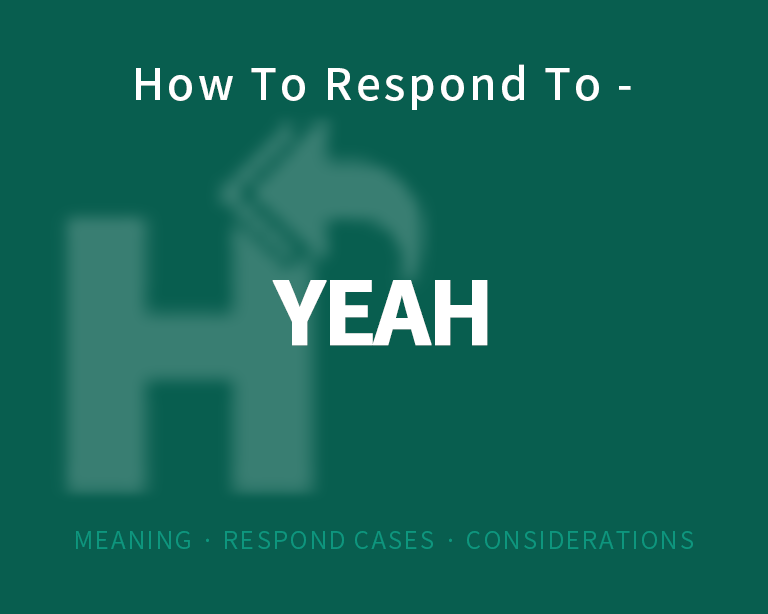The best way to respond to 'yeah'

What does 'yeah' mean?
The word 'yeah' can be used as:
A casual confirmation: For example, 'Do you want to get lunch?' 'Yeah, sure.' Here it indicates agreement or approval.
A noncommittal placeholder: For example, 'What did you think of the meeting?' 'Yeah, it was alright.' Here it suggests the person is hesitant or indifferent.
An abrupt dismissal: For example, 'I have some concerns about the new policy.' 'Yeah, okay.' This use of 'yeah' closes down discussion and indicates a lack of interest.
'Yeah' is an informal expression, so the context and tone in which it is said provides important clues to the intended meaning. It requires an appropriate and thoughtful response.
The best 3 ways to respond to 'yeah'
Mirror the tone and formality. Respond with an equally casual 'yeah' or 'ok' if the context is informal. But in professional settings, respond formally to match the expected etiquette.
Provide an open-ended follow up. Say something like 'Did you have any other thoughts on this?' or 'Would you like to discuss this further?' This encourages meaningful discussion and clarification of the intended meaning.
Share your own perspective. Respond by expressing your view or experience on the matter, e.g. 'From my perspective, I saw it differently...' or ' In my experience, the outcome was positive..'. This can prompt the other person to elaborate on their 'yeah' in a productive conversation.
Considerations when responding to 'yeah'
Some things to consider:
Ask clarifying questions. Don't assume you fully understand the meaning or intent behind 'yeah'. Ask for more details or examples.
Check for cues that it's a dismissal. Look for signs the person is not open to discussing further before continuing the conversation. Their body language can provide clues.
Mirror the level of investment. Respond casually if the context suggests it's a superficial conversation. Provide a more thoughtful response when the topic is meaningful. Match the investment level.
Share how their 'yeah' impacts you (if relevant). Explain your interpretation of their 'yeah' and how it makes you feel or influences your views. But only do so if appropriate for the relationship and situation.
Don't take a casual 'yeah' personally. Remember that 'yeah' can be used as a placeholder for different reasons. Don't assume someone's indifference or noncommittal response is a reflection on you or your ideas.
Summarize the key highlights of your follow up response. Recap the main points you made to ensure clarity and shared understanding. This also provides another opportunity for the other person to respond thoughtfully.
Summary
In summary, the simple reply 'yeah' requires care and consideration in crafting an appropriate response. Seek to understand the intended meaning by clarifying or sharing your perspective. Match the level of formality and investment to build understanding. Respond openly and avoid taking 'yeah' personally. With thoughtfulness on both sides, 'yeah' can evolve into a meaningful discussion. The opportunity for clarity and mutual understanding is worth the effort.